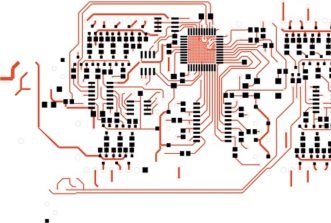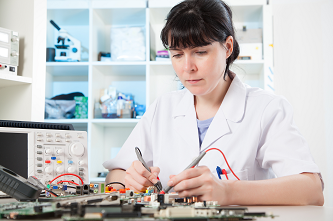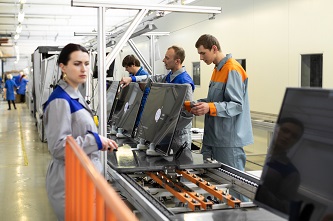ST buys NXP’s MEMS business for $950m, reports loss
STMicroelectronics has reported a surprising loss in the second quarter as it announces plans to acquire the MEMS sensor business from NXP Semiconductor. The company experienced a loss of $177 million this quarter due to restructuring costs, coupled with a 21% decline in turnover year-on-year in the first half of the year.
CEO of ST, Jean-Marc Chery, stated, “We delivered revenues at $2.77 billion, $56 million above the midpoint of our business outlook range, with Automotive slightly below our expectations, which was customer-specific. This was more than offset by higher revenues in Personal Electronics and Industrial.”
- ST details plan to cut 2800 jobs, revamp manufacturing
- ST restructures for the AI age
The deal with NXP involves ST paying $900 million with $50 million in incentives to bolster the analog, MEMS, and sensor division. The acquisition is anticipated to be finalized in the first half of 2026.
Lorenzo Grandi, CFO at ST, mentioned, “On a year-on-year basis, analog products, MEMS, and Sensors was down 15.2%, mainly due to a decrease in analog, to a lesser extent, a decrease in imaging while MEMS grew double-digit.”
The acquisition primarily focuses on automotive safety sensors, including passive (airbags) and active (vehicle dynamics), as well as monitoring sensors for various applications. MEMS inertial sensors in the automotive sector are expected to outpace the broader MEMS market.
“NXP is a leading supplier of automotive MEMS-based motion and pressure sensors, with a long history of strong customer adoption,” said Jens Hinrichsen, Executive VP and GM, Analog and Automotive Embedded Systems of NXP. “However, after careful portfolio review, the company has decided the business does not align with its long-term strategic direction. We have agreed with STMicroelectronics that the product line will fit ideally into ST’s portfolio, manufacturing footprint, and strategic roadmap. We are pleased that the MEMS sensor team will have a promising future at ST.”
The business being acquired generated revenue of $300 million in 2024.
This comes as ST posted a loss in Q2 from its restructuring costs.
“Power and Discrete products decreased by 22.2%. Embedded Processing revenues declined by 6.5%, mainly due to custom processing. RF & Optical Communications declined by 17.9%. By end market, Automotive declined by about 24%, Industrial by about 8%, while Personal Electronics, Communication Equipment, and Computer Peripherals each declined by about 5%. Year-over-year, sales to OEMs decreased by 15.3% and by 12% to distribution,” Grandi explained.
“Gross profit in the second quarter was $926 million, decreasing by 28.5% year-over-year. Total net operating expenses, excluding restructuring, amounted to $869 million in the second quarter, in line with our expectations and declining by 6% year-over-year,” he added.
“In the second quarter, we reported an operating loss of $133 million, which included $190 million for impairment, restructuring charges, and other related phase-out costs, reflecting impairment of assets and restructuring charges, predominantly associated with the previously announced company-wide program to reshape our manufacturing footprint and resize our global cost base,”
Chery highlighted areas that are showing improvement, with automotive and industrial markets finally rebounding from the inventory overhang.
“While the current trade and tariff situation is causing uncertainty in car production levels, we confirm that Q1 was a low point for Automotive revenues,” he said. “We anticipate sequential growth in the third quarter compared to the second quarter. We secured wins with both silicon carbide and silicon devices and modules for multiple new DC-DC converter and onboard charger designs, as well as with our smart power and smart fuse solutions for electric vehicle power systems.”
“We are making good progress in executing our roadmap with many new products set to launch in 2025 and 2026 across our ARM-based Stellar and STM32A product families. We are also witnessing strong design-in momentum globally with both large-scale OEMs and Tier 1 suppliers. One significant win in Q2 was for a one-box braking system by a leading electric vehicle maker in China.
Highlighting the value of the NXP deal, ST secured deals for MEMS sensors for ADAS, airbag control, and infotainment systems, as well as an imaging sensor for in-cabin monitoring. There are also increasing opportunities for sensors to enhance the driving experience with applications such as road noise cancellation, occupancy monitoring, and seat position sensors.
Chery also noted the return of growth in the STM32 microcontroller business.
“I would also like to highlight that specifically for general-purpose microcontrollers, we are back to year-on-year growth. In terms of month of inventory distribution overall, we are now back to a normal situation in China, close to normalization in other ASEAN countries, and improving but still above normal in other geographies,” he stated.
“Use of our software ecosystem continues to grow strongly, and we are now close to 1.5 million unique users on a 12-month rolling basis compared to the 1.3 million unique users for 2024.”














